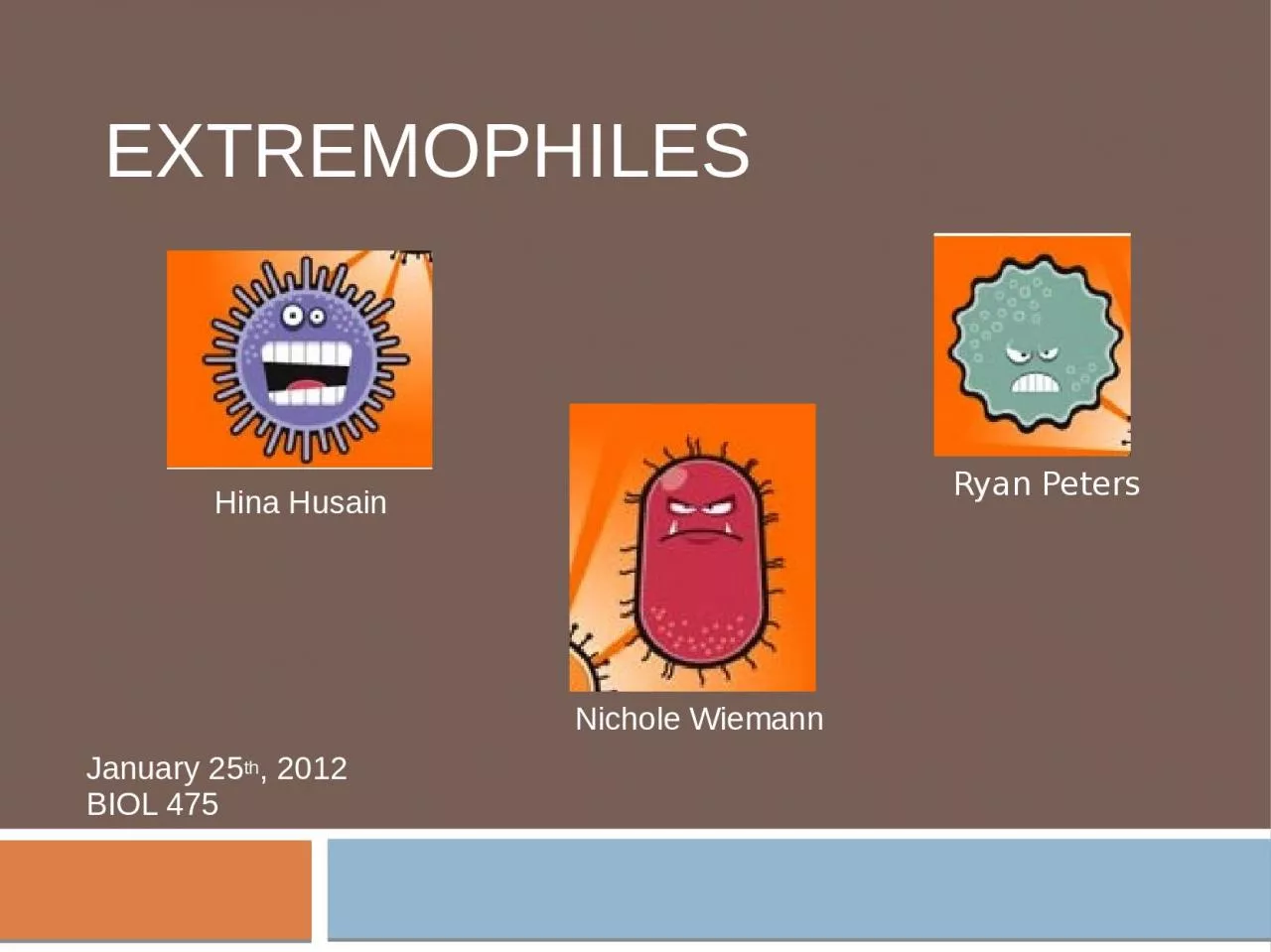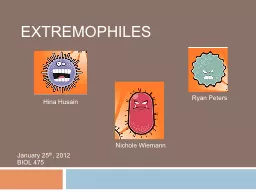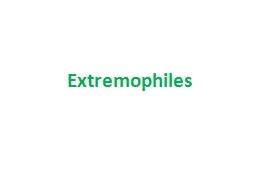PPT-Extremophiles January 25
Author : susan2 | Published Date : 2023-05-22
th 2012 BIOL 475 Hina Husain Ryan Peters Nichole Wiemann Extremophiles What are they Organisms that thrive under extreme conditions Alkaline Acidic Extremely
Presentation Embed Code
Download Presentation
Download Presentation The PPT/PDF document "Extremophiles January 25" is the property of its rightful owner. Permission is granted to download and print the materials on this website for personal, non-commercial use only, and to display it on your personal computer provided you do not modify the materials and that you retain all copyright notices contained in the materials. By downloading content from our website, you accept the terms of this agreement.
Extremophiles January 25: Transcript
Download Rules Of Document
"Extremophiles January 25"The content belongs to its owner. You may download and print it for personal use, without modification, and keep all copyright notices. By downloading, you agree to these terms.
Related Documents














